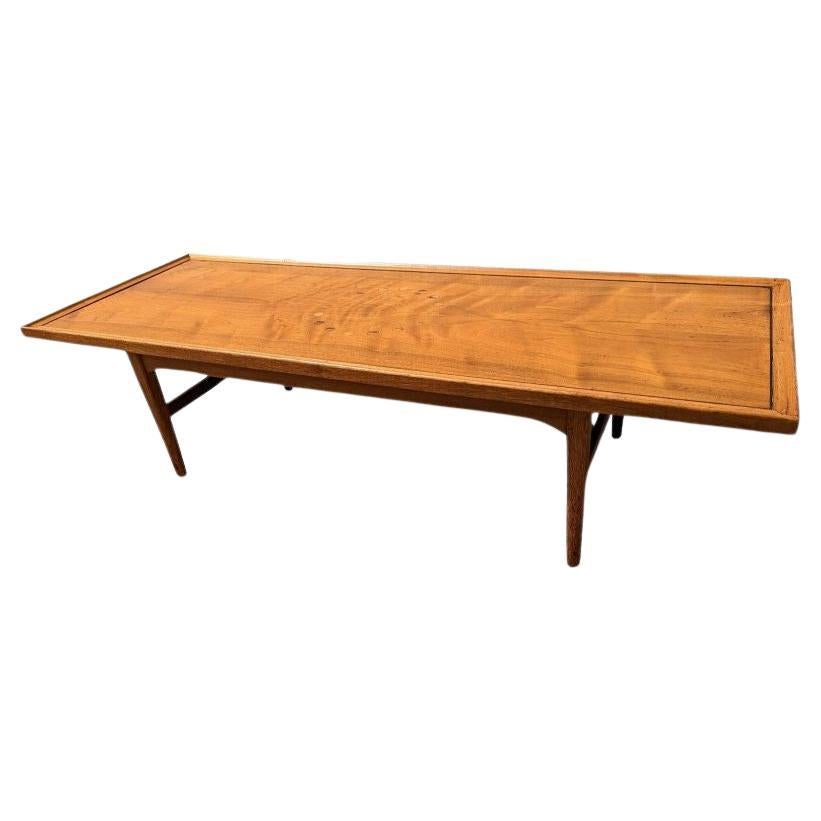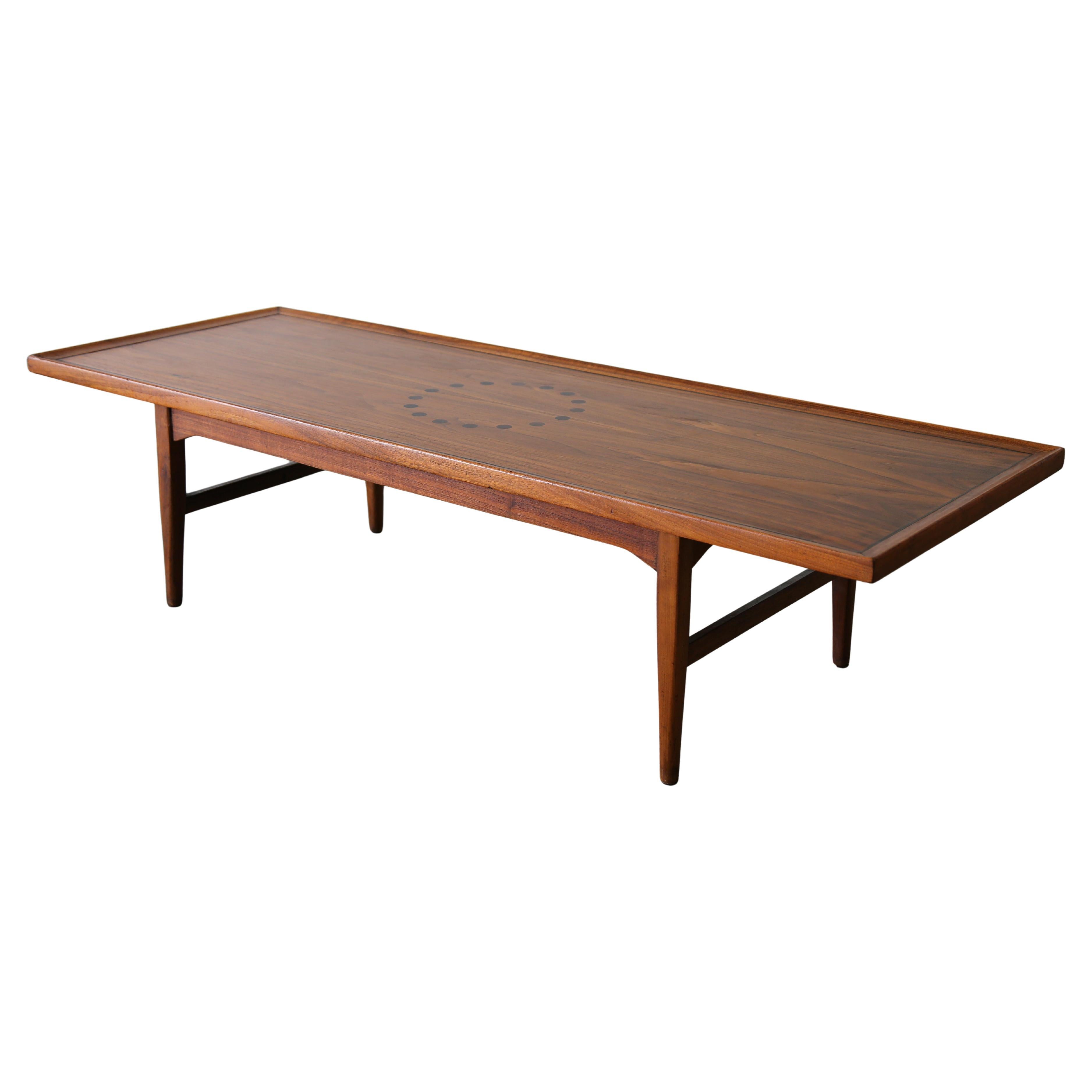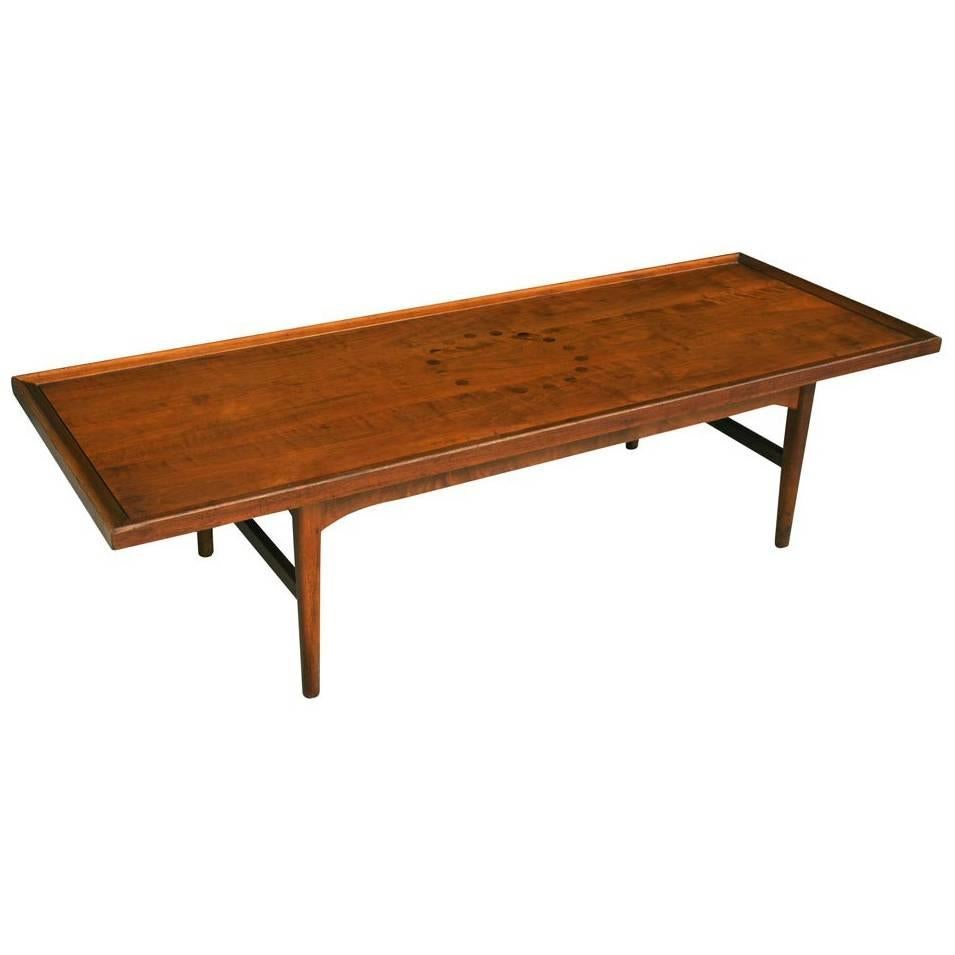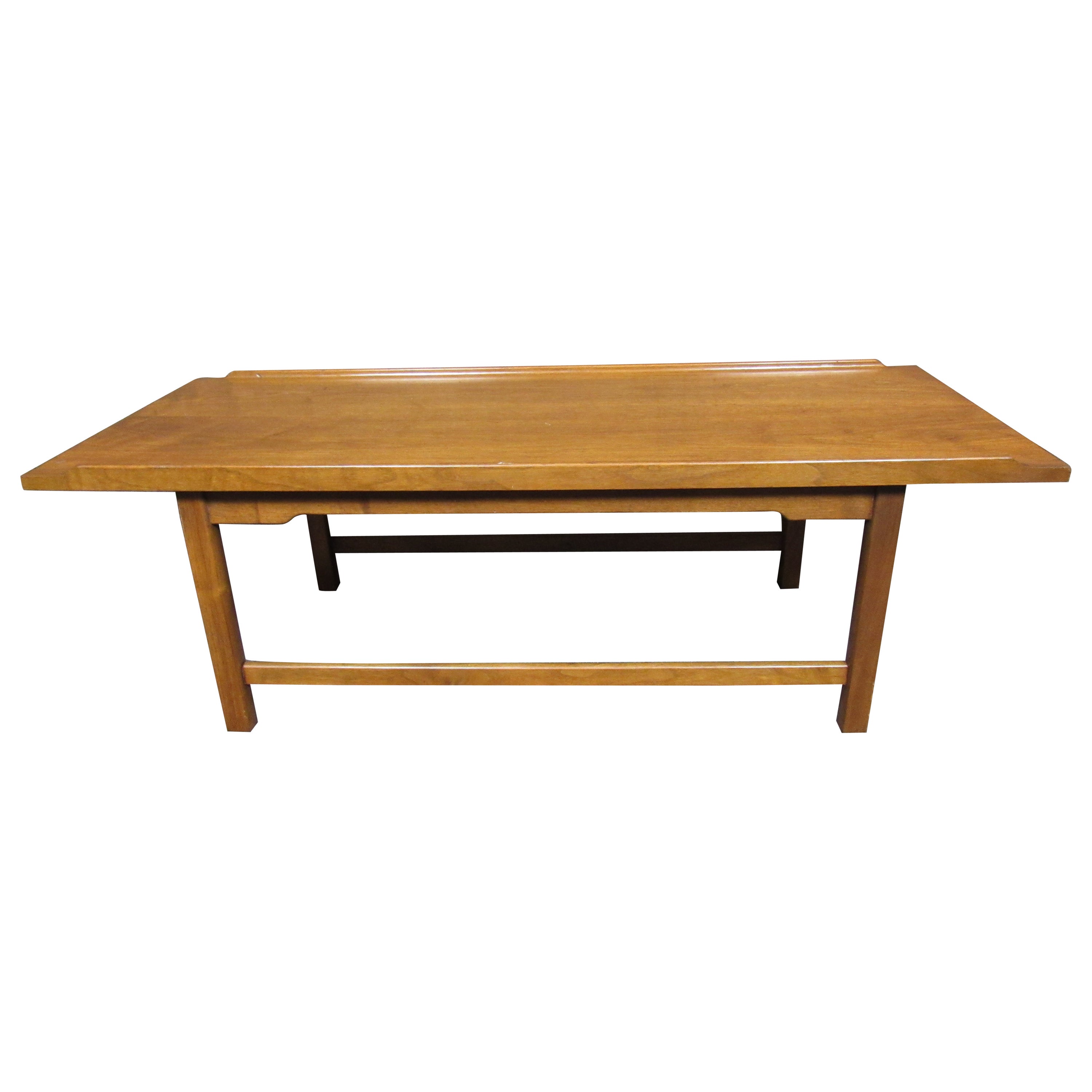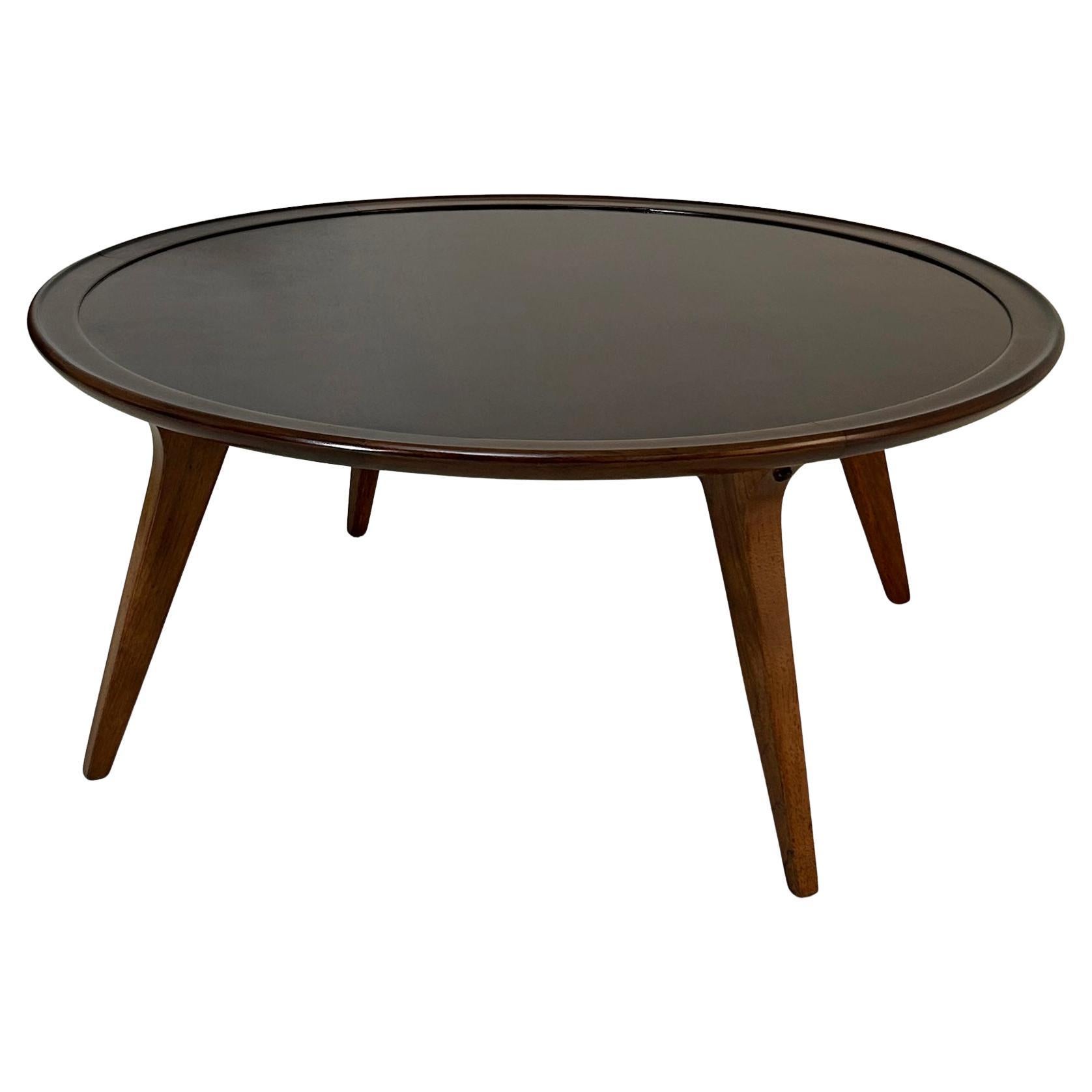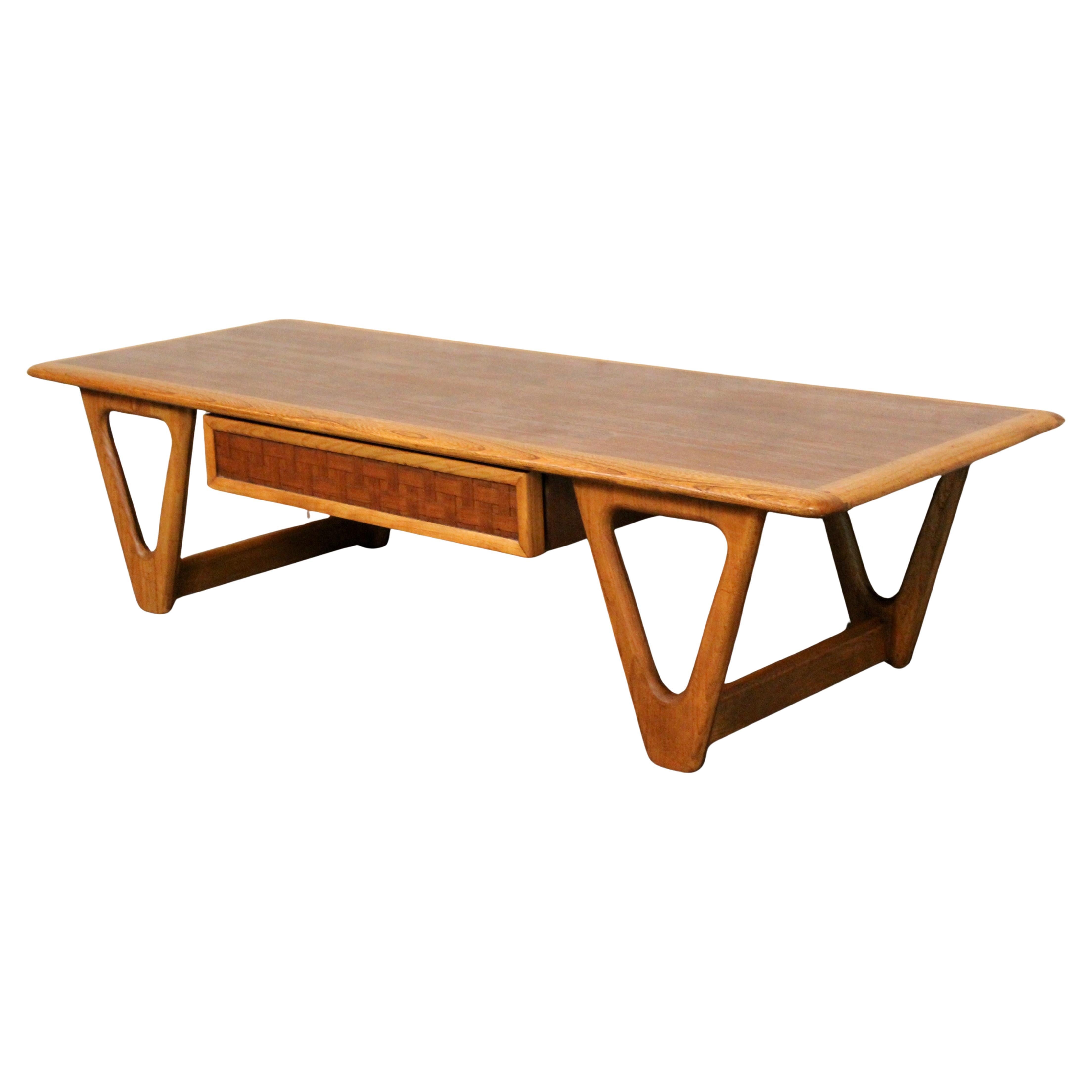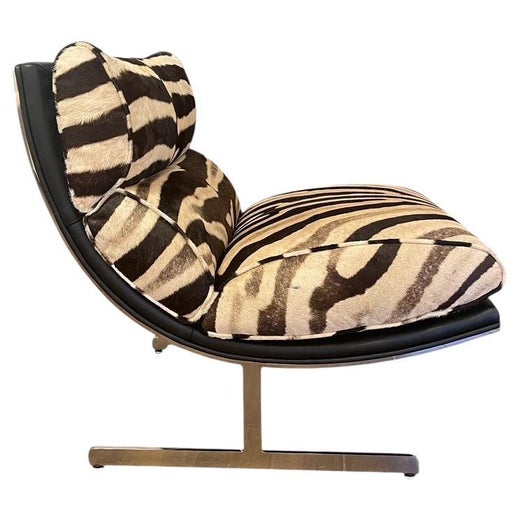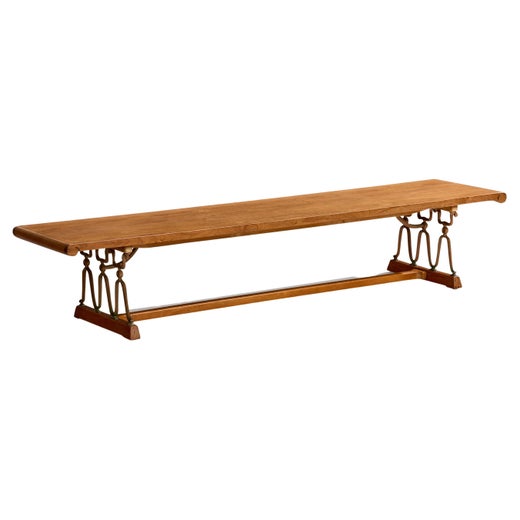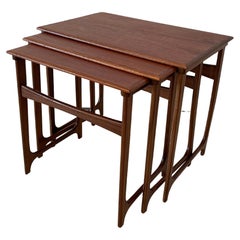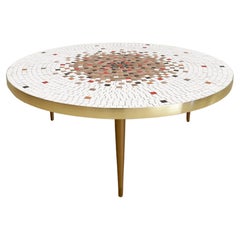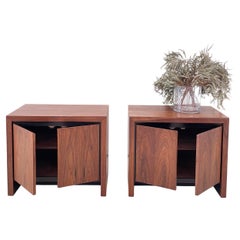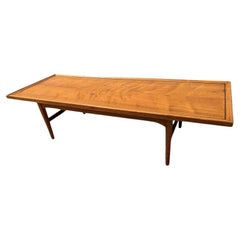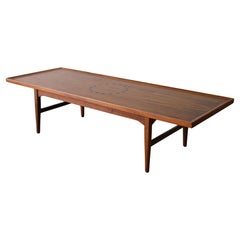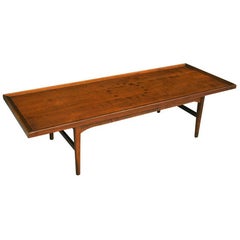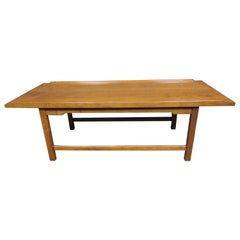881-210 Declaration Series Coffee Table, Designed by Kipp Stuart for Drexel
About the Item
- Creator:Drexel (Manufacturer),Kipp Stewart (Designer)
- Dimensions:Height: 15 in (38.1 cm)Width: 60 in (152.4 cm)Depth: 22 in (55.88 cm)
- Style:Mid-Century Modern (Of the Period)
- Materials and Techniques:
- Place of Origin:
- Period:
- Date of Manufacture:1961
- Condition:Refinished.
- Seller Location:Denver, CO
- Reference Number:1stDibs: LU7008240801592
Kipp Stewart
The ultimate multi-hyphenate, Kipp Stewart counted painting, photography, architecture and furniture design among his talents. Known to furniture obsessives for the Declaration series he codesigned for North Carolina’s Drexel Furniture, Stewart was actually born in Pittsburgh, Pennsylvania, in 1928 and is most commonly associated with mid-century design movements of his adopted home state of California. There, in 1972, Stewart designed the Ventana Big Sur, a luxury resort near Montecito for which he oversaw architecture, planning, furniture and interior design across 160 acres of land.
By the time Stewart spearheaded the Ventana, he was already well versed in furniture design. After briefly serving in the U.S. Navy as a teenager, Stewart enrolled at the Chouinard Art Institute (present-day CalArts) in Los Angeles.
By the time he graduated, Stewart was steeped in the world of modern seating design, experimenting with new chair models that bridged form and function. Charles and Ray Eames were important influences on his early work, which included a chrome-framed lounge chair whose reclined shape bears a striking resemblance to the Eameses’ iconic lounge.
In the late 1950s, Stewart partnered with another West Coast furniture designer, Stewart MacDougall, on a line of modern furniture for Drexel. (The pair were also producing case pieces and more for Glenn of California.)
Drexel soon unveiled Stewart and McDougall’s Declaration line, which was constructed entirely of natural walnut and featured the choice of white porcelain or brass drawer pulls and cabinet door handles. Although its stylish credenzas and other pieces reflect the kind of slim-lined, low-slung silhouettes for which mid-century design has become known, there are also elements that nod to earlier American and European furniture design, such as the dining chairs whose flattened spindle backs recall Shaker and Windsor chair design, distinguishing them from the modern designs becoming prolific in Scandinavia at the time.
The Declaration pieces were so indicative of a particularly American style, in fact, that several items from the collection were selected by the U.S. government to represent the country at the Brussels World’s Fair in 1958.
While Stewart found success as a painter and with his Ventana hotel project — and had also designed chairs, chests and more for Directional — the Drexel Declaration line is his best-known furniture collection and remains highly sought after by collectors today.
Find a wide range of vintage Kipp Stewart furniture on 1stDibs, including dining room chairs, end tables and more.
Drexel
While vintage Drexel Furniture dining tables, dressers and other pieces remain highly desirable for enthusiasts of mid-century modern design, the manufacturer's story actually begins decades before its celebrated postwar-era Declaration line took shape.
In 1903, in the small town of Drexel in the foothills of North Carolina’s Blue Ridge Mountains, six partners came together to found a company that would become one of the country’s leading furniture producers. The first offerings from Drexel Furniture were simple: a bed, washstand and bureau all crafted from native oak wood, sold as a bedroom suite for $14.50.
One of Drexel’s early innovations was to employ staff designers, something the company initiated in the 1930s. This focus on design, which few other furniture companies were committing to at the time, allowed Drexel to respond to a variety of new and traditional tastes. This included making pieces inspired by historic European furniture, like the popular French Provincial–style Touraine bedroom and dining group that borrowed its curves from Louis XV-era furniture. Others replicated the ornate details of 18th-century chinoiserie or the embellishments of Queen Anne furniture. Always ready to adapt to new customer demands, during World War II, Drexel built a sturdy desk designed especially for General Douglas MacArthur.
In the postwar era, Drexel embraced the clean lines of mid-century modernism with the Declaration collection designed by Stewart MacDougall and Kipp Stewart that featured elegant credenzas and more made in walnut, and the Profile and Projection collections designed with sculptural shapes by John Van Koert. In the 1970s, Drexel introduced high-end furniture in a Mediterranean style.
Drexel changed hands and visions throughout the years. It was managed by one of the original partners — Samuel Huffman — until 1935, at which time his son Robert O. Huffman took over as president. It was then that the company began to expand, with several acquisitions of competitors in the 1950s, including Table Rock Furniture, the Heritage Furniture Co. and more.
With the manufacturer’s success — spurred by its embrace of advertising in home and garden magazines — it opened more factories in both North and South Carolina. By 1957, the company that had started with a factory of 50 workers had 2,300 employees and was selling its furniture nationwide.
Drexel underwent a series of name changes in its long history. Its acquisition of Southern Desk Company in 1960 bolstered its production of institutional furniture for dormitories, classrooms, churches and laboratories.
In the following decades, contracts with government agencies, hotels, schools and hospitals brought its high-quality furniture to a global audience. U.S. Plywood-Champion Papers bought Drexel Enterprises in 1968, and it became Drexel Heritage Furnishings.
In 2014, the last Drexel Heritage plant, in Morganton, North Carolina, closed its doors. The company rebranded as Drexel in 2017.
The vintage Drexel furniture for sale on 1stDibs includes end tables designed by Edward Wormley, walnut side tables designed by Kipp Stewart and lots more.
- ShippingRetrieving quote...Shipping from: Denver, CO
- Return Policy
More From This Seller
View AllMid-20th Century Unknown Mid-Century Modern End Tables
Wood, Teak
Mid-20th Century American Mid-Century Modern Coffee and Cocktail Tables
Brass, Steel
Vintage 1970s American Modern Night Stands
Wood, Oak, Walnut
Late 20th Century American Modern Tables
Oak, Burl
Mid-20th Century American Mid-Century Modern Footstools
Hickory, Oak
Late 20th Century American Post-Modern Console Tables
Marble, Stone
You May Also Like
20th Century American Mid-Century Modern Coffee and Cocktail Tables
Walnut
Vintage 1960s American Mid-Century Modern Coffee and Cocktail Tables
Walnut
Vintage 1960s American Mid-Century Modern Coffee and Cocktail Tables
Rosewood, Walnut
Mid-20th Century Mid-Century Modern Coffee and Cocktail Tables
Wood
Mid-20th Century American Mid-Century Modern Coffee and Cocktail Tables
Walnut
Mid-20th Century American Mid-Century Modern Coffee and Cocktail Tables
Walnut, Wood, Hardwood, Fruitwood
